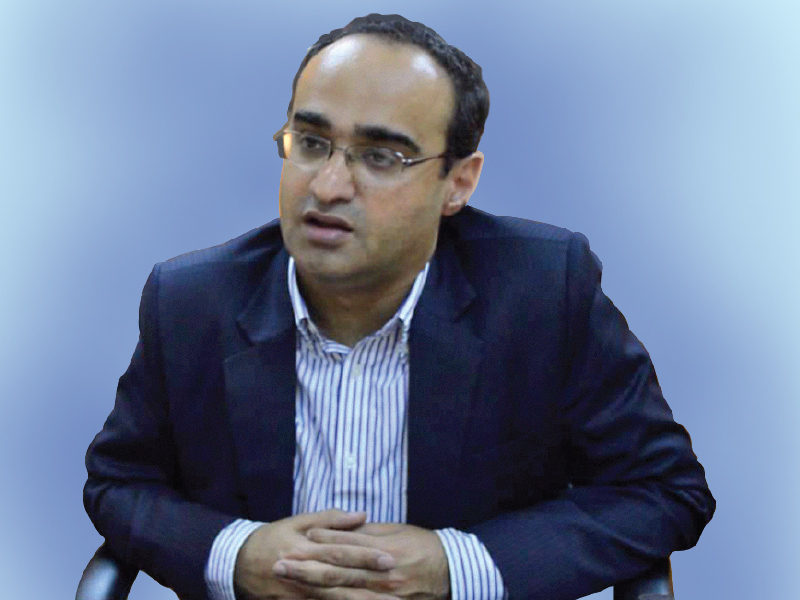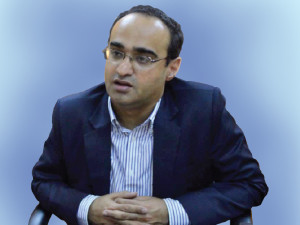

Gagan Verma
Regional Director & Head for India, ASEAN & SAARC Region, Lifesize
Simplification of technology will increase adoption of technology, says Gagan Verma, Regional Director & Head for India, ASEAN & SAARC Region, Lifesize to Gaurav Srivastava and Priyanka Singh, Elets News Network (ENN)
How do you vision your contribution to the healthcare vertical of smart city?

As LifeSize has always been a trendsetter in high-definition (HD) videoconferencing, we look forward to being one of the key stakeholders in the entire smart city project. In the light of the objectives of the smart city, around 30 per cent to 40 per cent degrowth in infrastructure business and dynamic changes in videoconferencing industry, we have invested in infrastructure in 15 data centres globally. Moreover, our customers need to invest only in subscription packages and not hardware. By experimenting new models, we have created low-cost high-quality end points that get paid by cloud. As the smart city project visions to provide easy accessibility to healthcare services, the scale to which the government is talking about smart city is achievable only through cloud and not hardware. In comparison to hardware, any cloud application is scalable within minutes. Our cloud service resides on mobility, laptop and normal conference rooms, in fact anywhere. In terms of smart city, there will be no requirement to invest in hardware to connect to any office or any part of the smart city.
Our application will allow users to connect to different departments anytime, anywhere. Both the end users can have the same application for direct videoconferencing with no investment in hardware. Moreover, all addresses will be available in the directory; one can connect to the call by just clicking on the icon. The best part of our application is that it is interoperable by anybody or at any end point, such as any H.323 device and provider. Users just needa laptop or any other electronic device with Internet connection and a camera to access our services. Our application is freely downloadable with 14-day free trial. Apart from video conferencing, our service also allows audio conferencing. Alternatively, our application is easy to use, as the user can senda guest invite to others, who can copy the link and paste on Google chrome and directly connect to the call. With the demand for videoconferencing exploding, our cost-effective services will play a key role in making life easier for the users. At the end, everybody wants high-end video conferencing at a reasonable cost.
Adoption of telemedicine among medical professionals, medical service providers and common masses as a concept remains cumbersome
Although the entire telemedicine sector is expanding, we continue to witness challenges in its adoption among the medical fraternity. How do you foresee your companys role in addressing these challenges in telemedicine sector?

I have been associated with telemedicine industry for close to 12 years. Despite being a concept in use for long, telemedicine has not seen much actual development due to lack of funding. Secondly, the adoption of telemedicine among medical professionals, medical service providers and common masses as a concept remains cumbersome. As a result, we have simplified the technology for all types of users. The users need to just have the basic knowledge of laptops, electronic devices and browsing to access our services through our application. Additionally, we can connect as many users as possible from different ends. We have also made local numbers available in 60 countries to avoid international calls. Our videoconferencing pack is bundled with all facilities and flexibilities for free of cost. By sending a guest invite, we can ensure all flexibilities, such as connect users in different locations and through different sources. This plays a crucial role in expanding the footprint of telemedicine in both rural and urban areas.
Our application will allow users to connect to different departments anytime, anywhere. Both the end users can have the same application for direct videoconferencing with no investment in hardware
Will your application and local numbers allow undisrupted services to users anytime, anywhere? Has Lifesize outsourced any of its services for efficiency and better management?
The selected 60 numbers of 60 countries are toll-free hunting multiple line numbers. Our applications relevancy is to the tune of geographic redundancy. Even if our data centres go down due to some unforeseen circumstances, the calls get directed to Singapore, Hong Kong, etc. In cloud, everything is configured in a geographic redundancy manner, unlike hardware. During a videoconference, if any user gets disconnected, videoconferencing will not stop. Overall, we have ensured users access services without any disruption by addressing the core issues. We have made the technology simpler by ensuring control at the end of the users. Moreover, IBM, the leader in the data security centre services, provides the software platform; this gives us flexibility to focus on our core area of service.
Which are the other sectors and states that Lifesize is targeting for business opportunities? How are you supporting institutions involved in research and development (R&D)?
The government and education sector are our key spenders. The Indian Institute of Science (IISc) is one of our clients. Through our application, any professor can use local numbers or connect anybody on an ad hoc basis with no investment in hardware and highquality service. Our application offers a better actual use scenario than that in a conventional business environment. Personally, I have sold videoconferencing packages to most of the states and educational institutions, as they can foresee the benefits of cloud.
How has been your experience with healthcare industry? What are the major challenges you face while selling video conferencing packages to the government?
Overall, the experience has been wonderful; however, the adoption of technology or videoconferencing remains a challenge in the healthcare sector. Despite hardware being expensive and not easy to use, the real use of cloud has been minimal. Therefore, we have made it easy and flexible by taking care of all hardware related challenges through cloud. Procurement process is a challenge and before procurement usability factor is another challenge. Though usability has improved to quite an extent, yet people buy but fail to use it adequately. Therefore, it is essential to educate the government. Secondly, government has its own pain areas in terms of procurement due to the tender scenario. Earlier only the National Informatics Centre (NIC) used to be there, now the Directorate General of Supplies and Disposals (DGS&D) has also come up with rate contracts.
Be a part of Elets Collaborative Initiatives. Join Us for Upcoming Events and explore business opportunities. Like us on Facebook , connect with us on LinkedIn and follow us on Twitter , Instagram.












